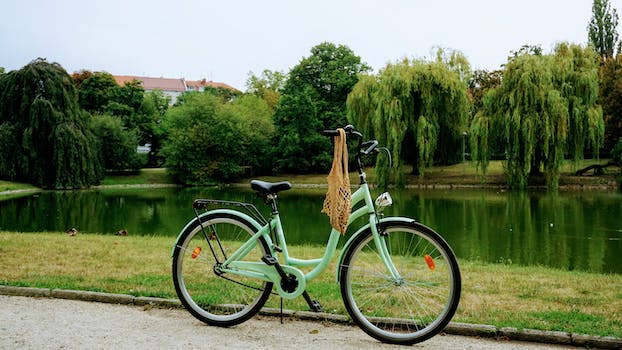Bike-sharing schemes have become increasingly common in major cities around the world in recent years. In addition to encouraging a more healthy way of life, these initiatives help cut down on carbon emissions, making them an essential part of sustainable urban planning. Bike-sharing schemes are now an integral part of city planning and development because to the growing demand for environmentally friendly modes of transportation.
- 1. Introduction
- 1.1. What are bike-sharing programs?
- 1.2. Why are they important in eco-friendly cities?
- 1.3. Benefits of bike-sharing programs
- 2. Features of successful bike-sharing programs
- 2.1. User-friendly technology
- 2.2. Well-maintained bikes
- 2.3. Convenient locations
- 2.4. Affordable pricing
- 2.5. Effective marketing and outreach
- 3. Examples of successful bike-sharing programs
- 3.1. Copenhagen, Denmark
- 3.2. Amsterdam, Netherlands
- 3.3. Barcelona, Spain
- 3.4. Montreal, Canada
- 3.5. Portland, Oregon
1. Introduction
As a means of promoting greener modes of transportation, bike-sharing programs have exploded in popularity in recent years. These initiatives provide a low-cost and easy-to-use alternative to driving and other kinds of transportation that add to pollution and congestion. In this piece, we’ll look at why bike-sharing schemes are such an important part of sustainable urban planning.
1.1. What are bike-sharing programs?
For short, one-way rides, many people are turning to bike-sharing schemes. These initiatives give city dwellers and visitors access to a low-cost, hassle-free, and eco-friendly way of transportation. Users of a city’s bike-sharing program can get and return their bikes to any of a series of docking stations strategically placed around the city. A membership or credit card swipe at a kiosk grants users access to bicycles. The popularity of bike-sharing schemes can be attributed to their ability to alleviate traffic, encourage healthy lifestyles, and lessen environmental impact in urban areas.
1.2. Why are they important in eco-friendly cities?
Cities all across the world are seeing the benefits of bike-sharing systems. In addition to helping people live longer, healthier lives, they also benefit the planet. These initiatives assist make cities healthier and more pleasant to live in by encouraging people to use modes of transportation other than vehicles and public transportation. In addition, many bike-sharing programs are reasonably priced and easily accessible, making them appealing to a wide range of demographics. In sum, these initiatives are crucial to the success of green cities and have the potential to greatly improve the quality of life for locals while also protecting the natural world.
1.3. Benefits of bike-sharing programs
As a healthy mode of transportation, bike-sharing programs have exploded in popularity in cities throughout the world. There are several ways in which individuals and communities can benefit from these initiatives. Bike-sharing programs are a great way for people to get around town while getting some exercise and saving money. Additionally, people can save money and lessen the stress of traversing congested urban areas by reducing their reliance on personal automobiles thanks to bike-sharing schemes. Bike-sharing schemes benefit society as a whole by making cities more livable and sustainable by decreasing traffic congestion and air pollution. Moreover, bike-sharing schemes can stimulate local economic growth by attracting environmentally conscious firms and enticing tourists. Overall, bike-sharing programs are an important part of sustainable urban development and provide several advantages to both individuals and communities.
2. Features of successful bike-sharing programs
There are a few essential components of a successful bike-sharing program that allow it to effectively promote greener modes of transportation. First and foremost, the interfaces of these programs need to be intuitive enough for riders of all experience levels to use successfully. Everything from the smartphone apps to the bike rental kiosks to the rental and return procedures should be simple and straightforward. Second, bike-sharing systems should include an extensive system of rental stations so that users can easily find them and return them anywhere in the city. Thirdly, these initiatives need a stable and well-maintained fleet of bicycles for riders’ convenience and security. Finally, a robust marketing strategy that highlights the benefits of eco-friendly transportation and encourages people to participate in the program is essential for its success. Cities may successfully promote sustainable mobility options and lower their carbon footprint by including these characteristics into their bike-sharing systems.
2.1. User-friendly technology
User-friendly technology is crucial to the success of bike-sharing schemes. Users may find and reserve bikes with the use of user-friendly websites and mobile apps, and then follow simple unlocking and riding instructions. Moreover, well-maintained bikes that are simple to ride and have height- and width-adjustable seats and handlebars are common among successful bike-sharing schemes. All kinds of people, even those who have never ridden a bike before or are wary of trying a new mode of transportation, can benefit from bike-sharing programs because of these advantages.
2.2. Well-maintained bikes
Bike sharing programs rely heavily on well-maintained bicycles. The bikes are kept in top riding condition by being serviced and oiled on a regular basis. Bikes that have been properly cared for have characteristics like inflated tires, working brakes, and a clean, greased chain. To further assure riders’ safety, bicycles should be inspected frequently for signs of wear and replaced as necessary. Users are more likely to stick with a program that cares about their experience and their safety if that program also cares about keeping its bikes in good working order.
2.3. Convenient locations
The success of bike-sharing schemes depends on their accessibility. Stations for these systems should be strategically placed near high-traffic areas, such as transit hubs, commercial districts, and shopping malls, to maximize user convenience. There should be enough bike stations and bikes to accommodate demand during peak times, and their availability should be consistent across the service region. Stations for bike-sharing schemes should also be positioned in well-lit locations with low crime rates for the riders’ protection.
2.4. Affordable pricing
An affordable bike-sharing system is crucial to its overall success. The cost should be affordable for most people, not just a select few with more disposable cash. This can be done in a number of ways, such by providing discounts for students and the low-income, or by instituting a pay-as-you-go system so that riders only pay for the amount of time they actually ride the bikes. More people will use the bikes and fewer people will need to drive vehicles if communities make the program cheap. This will result in a more sustainable transportation system.
2.5. Effective marketing and outreach
Bike-sharing schemes can’t succeed without extensive and well-executed publicity and promotion. It is crucial to advertise the advantages of bike-sharing to the appropriate demographic. People who are in transit, in school, or visiting a heavily populated place are examples. Targeted advertising, strategic partnerships with local businesses, and social media campaigns can all help spread the word. Giving people a free or discounted ride is one way to get them to try out the bike-sharing program, which can lead to them becoming regular riders.
3. Examples of successful bike-sharing programs
It’s no surprise that in today’s fast-paced world, many working professionals opt for a nomadic way of life. Many people nowadays are always on the go between business and personal commitments, thanks to the proliferation of mobile devices and the spread of globalization. A lack of work-life balance is a potential downside of the increased freedom and adaptability this allows for. It can be challenging to strike a good balance between work and personal life without the right methods in place. In this post, we’ll discuss 10 ways to keep a healthy work-life balance while traveling frequently for work.
3.1. Copenhagen, Denmark
The bike-sharing scheme in Copenhagen, Denmark is held up as an example of how it’s done right. The city has made it simple and secure for people to travel around on bicycles by installing a vast system of bike lanes and other cycling-specific infrastructure. Bycyklen, the city’s bike-sharing program, also provides users with high-tech bicycles that can be easily navigated using GPS and a touchscreen display. Since its 2017 inception, the program has seen over 1 million trips. Bycyklen has been lauded for its environmental efforts, including as its use of renewable energy to power its bike stations and its commitment to recycling used bikes. When it comes to sustainable mobility and cutting down on automobile use, other cities can take a page out of Copenhagen’s book with its bike-sharing scheme.
3.2. Amsterdam, Netherlands
The Dutch capital of Amsterdam is often considered as one of the world’s most bike-friendly locations. The city’s approximately 800,000 bicycles explain the success of bike-sharing initiatives. The OV-fiets program, run by the Dutch Railways, is one of the most well-known. Riders can pick up a bike at any of the many stations set up at the city’s many transit hubs. The bikes are a hit with both locals and visitors because of their reliability and low price. The city has also made cycling a safe and convenient means of transportation by instituting laws like bike lanes and traffic signals. Amsterdam is often regarded as a model for how other cities might effectively implement bike-sharing systems into their public transportation networks.
3.3. Barcelona, Spain
Bicing, a bike-sharing system in Barcelona, Spain, is among the most popular of its kind throughout the globe. Since its inception in 2007, this initiative has expanded to include over 6,000 bicycles and 400 rental locations across the city. Traffic congestion is down, pollution levels are down, and people are living longer and healthier lives because to bicycling. Users can rent bicycles at any of the city’s stations and return them to any of the other stations, making the service convenient and inexpensive. As a means of promoting sustainable mobility and eco-friendly living, Bicing in Barcelona has encouraged other cities across the world to develop similar bike-sharing schemes.
3.4. Montreal, Canada
The city of Montreal, Canada is often held up as a model for how a bike-sharing system should be run. Since its inception in 2009, BIXI has grown to become an essential part of the city’s transportation infrastructure. Over 6,000 bicycles and 540 docking stations are available 24/7/365 through BIXI. The initiative has received high marks for its ease of use, since users can easily find and hire bikes through a straightforward mobile app. A number of local companies and organizations have joined together with BIXI to provide special deals and discounts for riders. Because of BIXI, Montreal is now a forerunner in environmentally friendly transportation, with bike lanes and other infrastructure being built all throughout the city.
3.5. Portland, Oregon
One city that has implemented a successful bike-sharing scheme is Portland, Oregon. Over a thousand bikes are available for rent at more than a hundred stations as part of the city’s Biketown initiative, which was introduced in 2016. Since the program’s inception, over 2 million rides have been taken by locals and tourists alike. The program does more than offer low-income members a cheap way to get around town; it also helps the local economy by creating jobs for bike repair and technicians.
Conclusion
The many advantages of bike-sharing systems, such as decreased traffic, enhanced air quality, and more people getting regular exercise, have made them an integral part of sustainable urban planning. It is crucial to continue promoting and bettering these initiatives as more communities adopt them, as they lead to a healthier and more sustainable environment for everyone.





